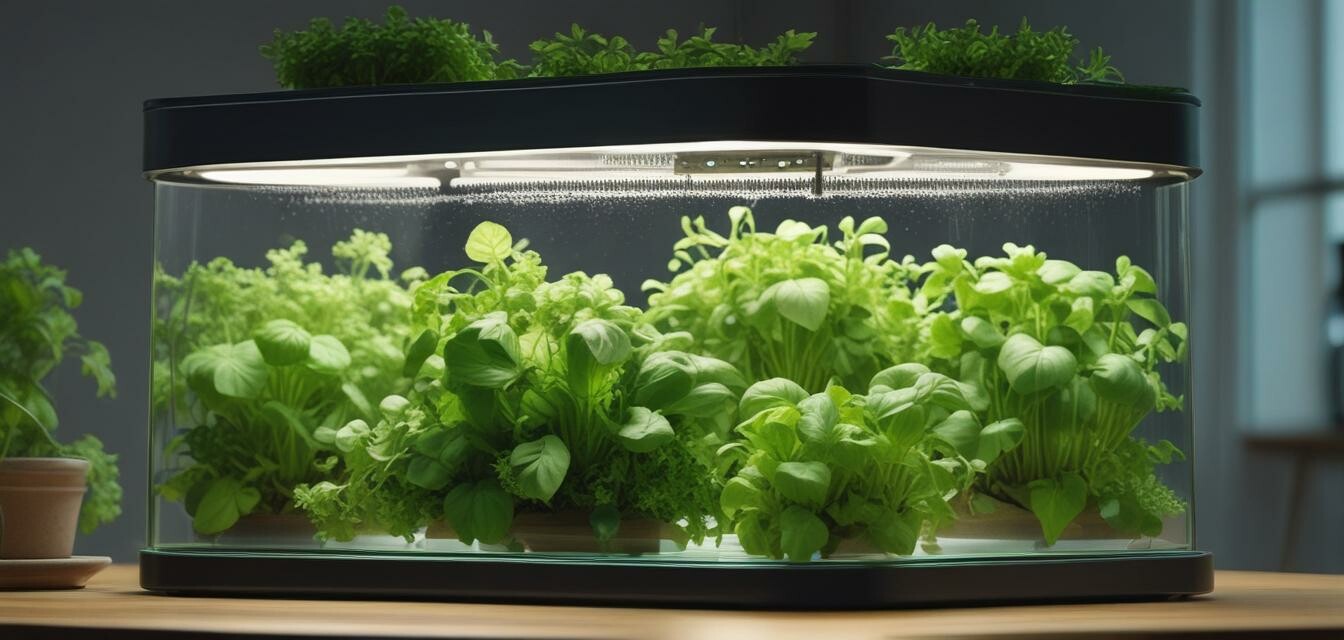
Hydroponic Herb Garden: A DIY Guide
Key Takeaways
- Hydroponic gardening eliminates the need for soil, using nutrient-rich water instead.
- Basil, mint, cilantro, and parsley are excellent choices for hydroponic herbs.
- You can create various DIY hydroponic systems easily at home.
- Proper light, nutrient balance, and water pH are crucial for healthy herb growth.
- Regular maintenance ensures a thriving hydroponic herb garden.
Creating a hydroponic herb garden is a fantastic way to bring fresh flavors to your kitchen, all while enjoying the process of gardening without soil. This DIY guide will walk you through everything you need to know about setting up and maintaining your very own hydroponic herb garden, perfect for any indoor space.
What is hydroponic gardening?
Hydroponic gardening is a method of growing plants using a nutrient-rich water solution instead of soil. This approach is particularly beneficial for urban settings or small apartments, where traditional gardening may not be feasible. Hydroponics allows for greater control over nutrient delivery, resulting in faster growth and often higher yields than soil gardening.
The benefits of growing herbs hydroponically
- Space-saving: Ideal for small areas.
- Water-efficient: Uses less water compared to traditional gardening.
- Faster growth: Plants typically grow 30-50% faster.
- Fresh produce year-round: No seasonal restrictions.
Best herbs to grow in a hydroponic system
When selecting herbs for your hydroponic garden, consider those that thrive in this environment. Here’s a list of popular options:
| Herb | Growth Characteristics | Flavor Profile |
|---|---|---|
| Basil | Fast-growing, requires plenty of light | Sweet, peppery |
| Mint | Grows vigorously, can take over space if not controlled | Refreshing, cool |
| Cilantro | Fast growth; prefers cooler temperatures | Pungent, citrusy |
| Parsley | Easy to grow, requires moderate light | Fresh, mildly peppery |
Setting up your hydroponic herb garden
Follow these simple steps to create your own hydroponic herb garden:
Step 1: Choose a growing system
There are several types of hydroponic systems you can use:
- Nutrient Film Technique (NFT): A continuous flow of nutrient solution over the roots.
- Deep Water Culture (DWC): Roots suspended in nutrient solution with air stones for oxygen.
- Wicking system: Uses capillary action to draw nutrient solution to the roots.
Step 2: Select your containers
Choose containers that will hold your herbs and allow for drainage. Consider materials like:
- Plastic or foam net pots
- Clear containers to monitor root health
- Recyclable or repurposed household items
Step 3: Prepare your nutrient solution
Purchase a quality nutrient solution designed for hydroponics. Follow the mixing instructions carefully to ensure your herbs receive the right balance of nutrients.
Step 4: Planting your herbs
Add your selected herbs into the containers, ensuring they are secure in the growing medium. This could be clay pellets, rock wool, or coconut coir.
Step 5: Set up lighting
Herbs require plenty of light to thrive. Consider using:
- LED grow lights for energy efficiency
- Fluorescent tubes for a budget-friendly option
- Sunlight if placed near a window
Step 6: Monitor and maintain your system
Regularly check the pH of your nutrient solution and adjust as needed (ideally between 5.5 and 6.5). Also, ensure your water level is adequate and replace the nutrient solution every 2-3 weeks.
Potential challenges in growing herbs hydroponically
While hydroponics offers many benefits, it does come with its own set of challenges. Some common issues include:
- Pests: Monitor for pests and use appropriate organic remedies.
- Water quality: Use filtered water when possible to prevent chemical buildup.
- Nutrient imbalances: Too much or too little nutrients can harm your plants.
Pros
- Fresh herbs at your fingertips
- Optimal growth environment
- Fun and educational DIY project
Cons
- Initial setup cost can be higher than soil gardening
- Requires regular monitoring and maintenance
- Can be challenging for beginners
Conclusion
A hydroponic herb garden is a satisfying way to cultivate fresh flavors in your home. With the right setup, you can enjoy the benefits of efficient and effective growing. By following this guide, you can create an engaging DIY project that not only beautifies your space but also enhances your cooking. Happy gardening!
Further resources
For additional information on hydroponic gardening, check out these pages:

